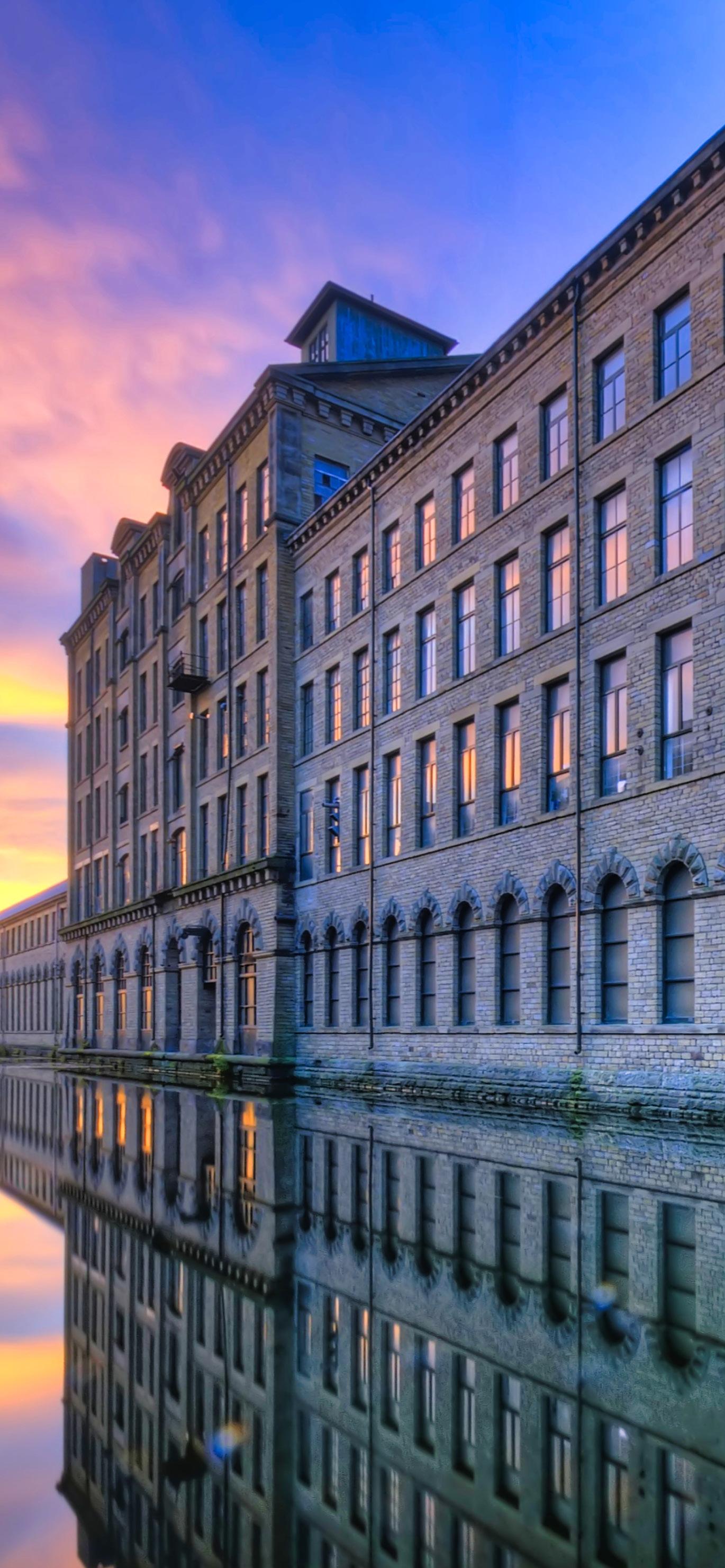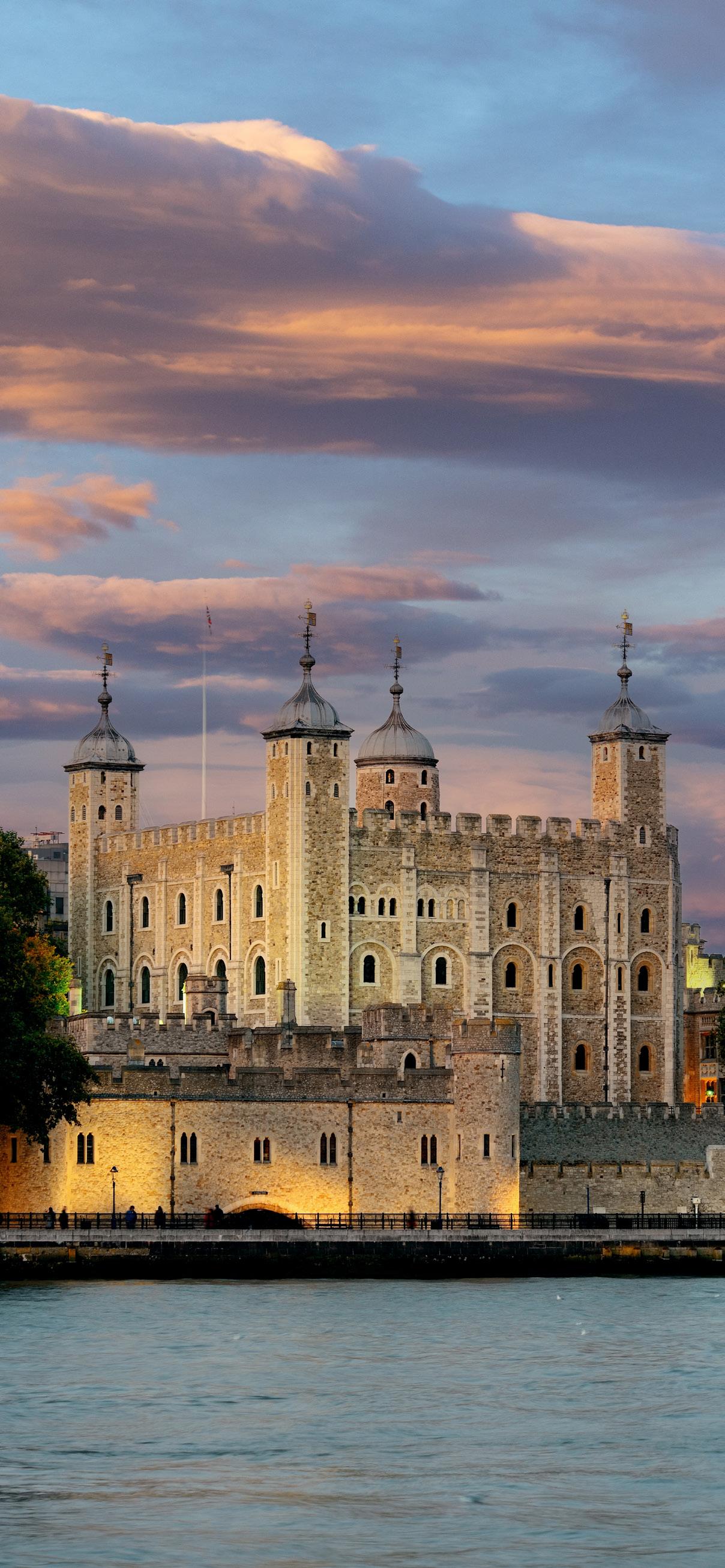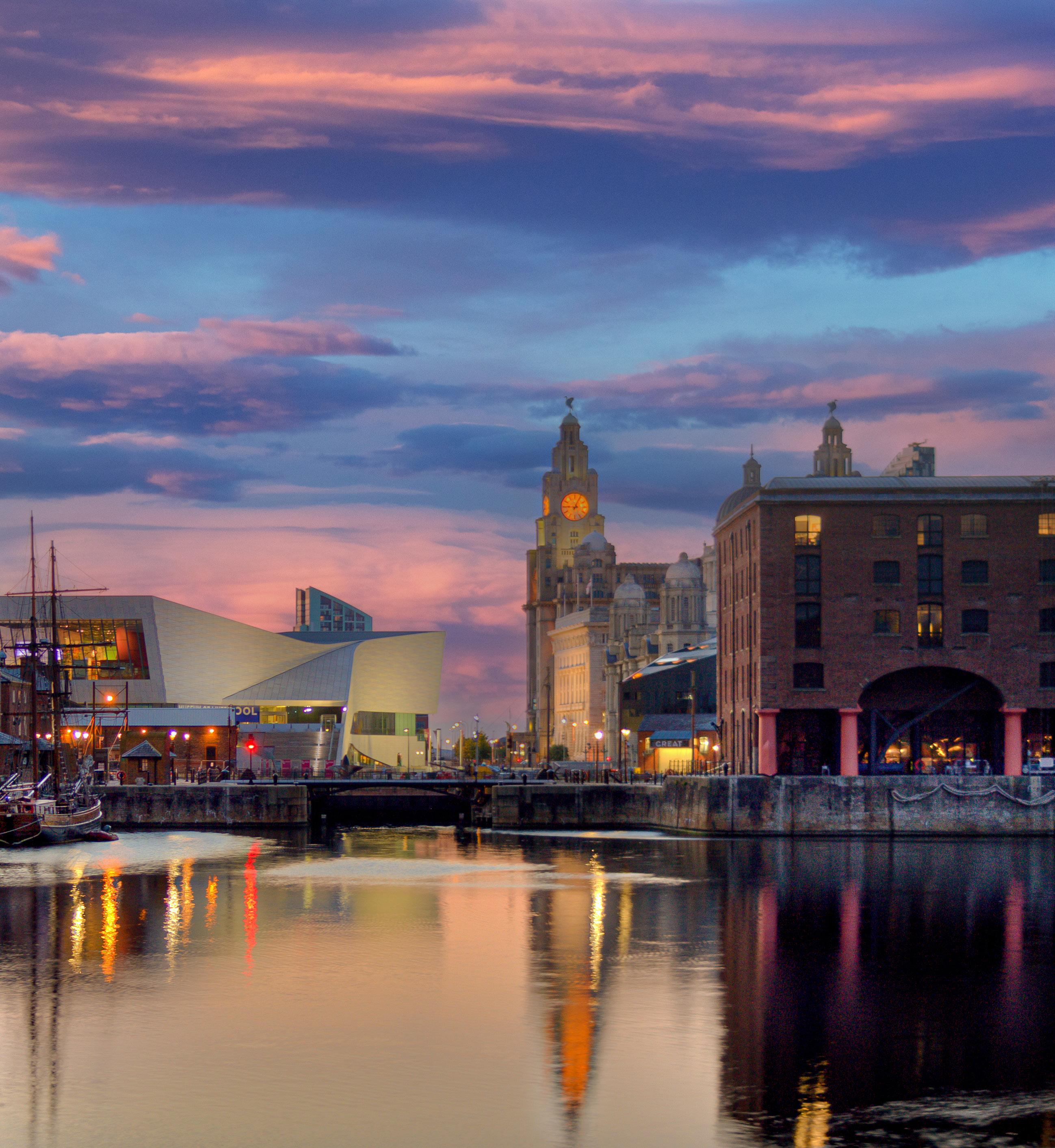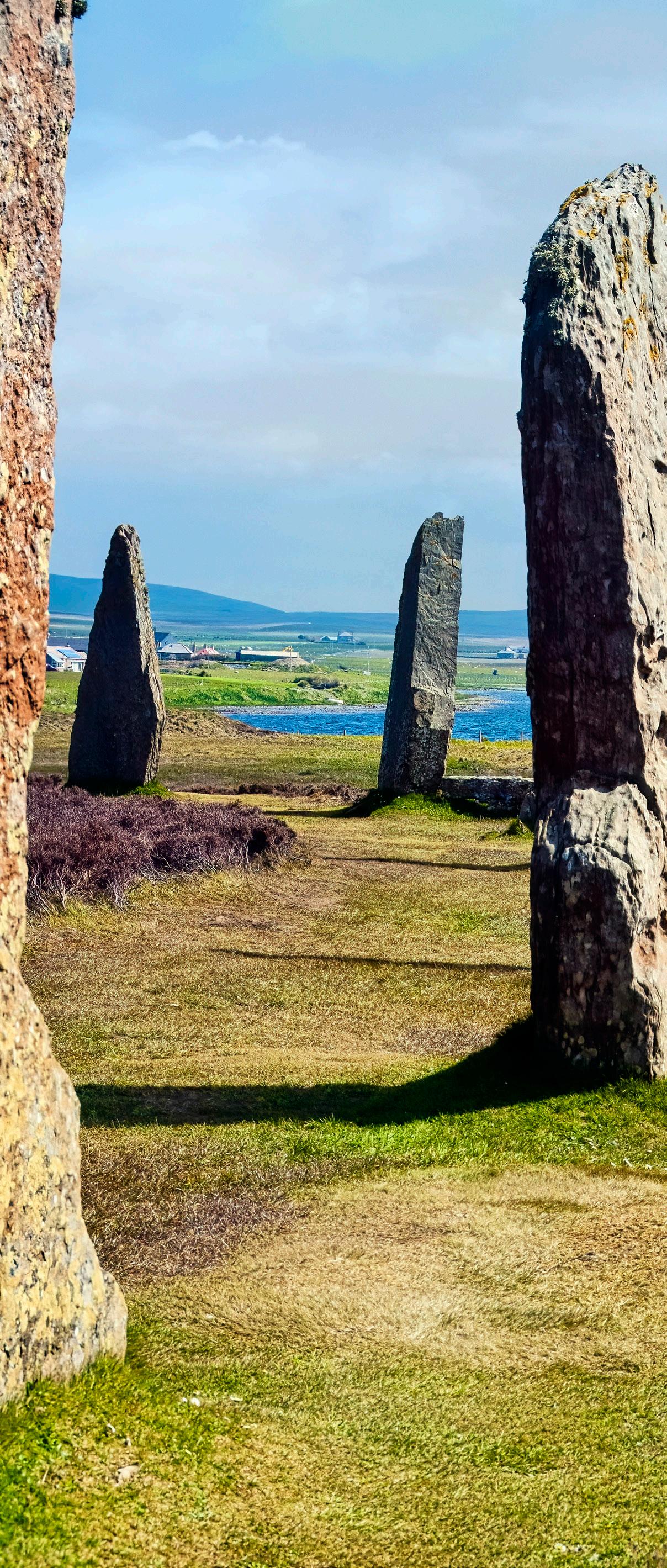UNESCO UK



UNESCO forms an important part of our history and culture, and provides humankind with educational and scientific tools to help us protect, preserve and better understand our past, present and future existance.
A key part of what makes UNESCO so integral to us, is that it is open to all, providing us with out-of-this-world opportunities to visit, explore and learn more about destinations, through history and culture.
In this guide - the first of sevenwe’ll walk you through the UK’s 29 mainland World Heritage sites from the magnificent City of Bath to the windswept Frontiers of the Roman Empire and magical Giant’s Causeway.
WHAT
What is UNESCO?
England
Scotland
Wales
Northern Ireland
Overseas Territories
Also in the series
Europe
USA
Canada
Australia

New Zealand
Southern Africa
Find out more about us
Alan Rogers Travel alanrogers.com
Worldwide Caravan & Motorhome Holidays
worldwide.alanrogers.com
UK UNESCO
2 3 23 27 32 34
WHAT IS

UNESCO?
The aim
“To promote buildings, complexes, manmade and natural environments and other destinations of educational. scientific, cultural and historic importance”
In 1945, just after the war had ended, 44 countries gathered together at a UN conference to coordinate the launch of an organisation that would embody a genuine culture of peace and represent education, culture, science and history.
The agency represents 193 member states and 12 associate members. Its core goal is to advance peace, sustainable development and human rights by facilitating collaboration between nations.
“Peace must be founded upon dialogue and mutual understanding. Peace must be built upon the intellectual and moral solidarity of humanity.”
Represents 1,157 World Heritage Sites in 167 countries
Coordinates tsunami early warning systems across the world
Leads global efforts to reach quality education for all Launched the SESAME research lab in the Middle East
CULTURAL OXFORDSHIRE

1987
blenheimpalace.com

1705
Construction started. Upon completion in 1722, it was one of England’s largest houses.
Blenheim Palace is the only country home in the UK to hold the title of palace, despite being nonroyal and non-episcopal. It was constructed between 1705 and 1722 to celebrate victory over the French at Blenheim in 1704. The house, one of the largest in the UK, was designed by architects Sir John Vanbrugh and Nicholas Hawksmoor in the rare and short-lived English Baroque style. The surrounding parkland and gardens were laid out by Capability Brown. It is perhaps best known for being the birthplace of British wartime Prime Minister Winston Churchill.
1763 1874
Capability Brown designs and lays out the grounds of the palace. Sir Winston Churchill born at the palace, his ancestral home.
BLENHEIM PALACE
HERE 3
CANTERBURY CATHEDRAL

CULTURAL KENT 1988

canterbury-cathedral.org
Founded in 597, and largely rebuilt in the Gothic style in 1174, Canterbury Cathedral is one of the England’s oldest and most famous Christian buildings. It is the seat of the Archbishop of Canterbury, Justin Welby. Throughout its long history, it is seen both murder and destruction; Archbishop Thomas Beckett was killed in the the north-western transept in 1170 knights of King Henry II and has been rebuilt fully on two occasions and partially on many others.
597
Cathedral founded.
1070
Rebuilt after a fire destroyed much of the original structure.
1382
Major reconstruction after the devasting Dover Straits Earthquake.
2013
Justin Welby appointed Archbishop of Canterbury.
HERE
4
CITY OF BATH & GREAT SPAS

CULTURAL SOMERSET 1987

visitbath.co.uk
Famously known for, and built around its Roman baths, the city of Bath in Somerset, southwestern England is a UNESCO world heritage site in itself and as part of the Great Spa Towns of Europe, a UNESCO transitional site as of 2021. Although it’s baths existed prior to the arrival of the Romans, the current baths were built in around 60 AD. The city was laid out later in the 18th century. Pride and Prejudice novelist Jane Austin resided in the city in the late 19th century.
60 AD
Romans begin building a settlement complex, the first in Britain.
383 AD 2012
The Roman Empire in Britain collapses. The city is left in disrepair. Largest Roman coin discovery in British history unearthed.
HERE
5
CULTURAL
CORNWALL & DEVON 2006
cornishmining.org.uk

This site, consisting of former mines, engine buildings, small settlements, harbours, and other associated structures, makes up the Cornwall and West Devon Mining Landscape as listed by UNESCO and inscribed in 2006. Tin and copper were the main materials exploited in this area from the 15th century onwards. The last mine closed in 1998, and many of the sites are now protected by National Trust with funding from UNESCO.
Earliest date that tin mining in Cornwall begun.

The last mine, South Crofty, was closed.
2000 BC 1998 2022
Exploitation of lithium carbonate in the area begins.
CORNWALL & WEST DEVON MINING LANDSCAPE
HERE
6
CULTURAL DERBYSHIRE 2001
derwentvalleymills.org
Belper, north of Derby, is home to perhaps Britain’s most well-known factory building. Derwent Valley Mills are a collection of factories that operated in the 18th and 19th centuries, first producing silk and then moving into the cotton industry. Richard Arkwright brought advancements in manufacturing technology, using water to power looms meaning cotton could be produced continuously without the need for skilled workers.
Although pay was likely low and conditions questionable, workers were provided with homes in newly-built communities with schools, chapels and markets.
DERWENT VALLEY MILLS

1769
Richard Arkwright patents the water frame system.
1774
Construction of the first waterpowered cotton mill begins in Derwent Valley.
Much of the mill network had declined. The Cromford and High Peak Railway closed, the final part of the complex to close.

7
1969 HERE
DORSET & EAST DEVON COAST

DORSET & DEVON 2001

jurassiccoast.org
Stretching from Exmouth in Devon to Studland Bay in Dorset, the Jurassic Coast is noted for its geological history spanning 185 million years including the Triassic, Jurassic and Cretaceous periods. The stretch of coast is also known for its natural features like Durdle Door, pinnacles, coves and dramatic cliffs.
Geological studies indicate this is when the rocks were formed.
Mary Anning discovers a Ichthyosaurs on Lyme Regis beach.
Archeologists discover a thalattosuchian fossil in Charmouth.
8
NATURAL HERE
JURASSIC ERA 1811 2023
DURHAM CASTLE & CATHEDRAL
HERE
CULTURAL
COUNTY DURHAM 1986

durhamworldheritagesite.com

Durham Castle is a Norman castle, which has been occupied since 1837 by University College, Durham after its previous role as the residence of the Bishops of Durham. It is jointly designated a UNESCO World Heritage Site with Durham Cathedral. UNESCO remarked that “Durham Cathedral is the largest and most perfect monument of ‘Norman’ style architecture in England. [The joint site] crystallises the memory of the evangelising of Northumbria and of primitive Benedictine monastic life [in England]”.
1072
1093
William the Conqueror orders construction of the castle.
Construction of the cathedral commences.
9
ENGLISH LAKE DISTRICT
NATURAL CUMBRIA 2017
lakedistrict.gov.uk
The Lake District is a region in the northwest of England, characterised by its mountains, quaint towns and its many lakes. It also known for the poets and writers that lived in the area such as William Wordsworth, Beatrix Potter and John Ruskin. England’s highest mountain, Scafell Pike, can be found here, as can England’s deepest and largest natural lakes, Wast Water and Windermere respectively.
PALEOZOIC ERA
The mountainous landscape of the Lake District is formed.
4500 BC 1951
Neolithic settlers begin to move into the area.
The Lake District National Park is created.


HERE
10
english-heritage.org.uk

The Frontiers of the Roman Empire are a series of defence forts and walls marking the border of the Roman Empire although they were not used by the Romans for that purpose. These defence systems can be found in Germany and the UK, perhaps the most notable being Hadrian’s Wall in northern England. Despite many people believing Hadrian’s Wall forms England’s border with Scotland, it lies entirely within England and has never formed the Anglo-Scottish border.
Construction started under the command of Emperor Hadrian. The Roman Empire in Britain collapses. The wall is abandoned.
FRONTIERS OF THE ROMAN EMPIRE
122 AD 383 AD 2003 HERE
The Hadrian’s Wall National Trail is opened.

CULTURAL NORTHERN ENGLAND
1987
11
IRONBRIDGE GORGE
CULTURAL SHROPSHIRE 1986
ironbridge.org.uk
Cutting deep through the Shropshire countryside, flows the River Severn following the route of the mighty Ironbridge gorge, named so due to the famous iron bridge – first of its kind in the world – that spans the gorge. Historically the site was useful to early industrialists due to the easy exploitation of raw materials such as coal, iron ore, limestone and clay, used to manufacture iron, tiles and porcelain. The bridge, opened in 1781, was the first major bridge in the world to be made of cast iron and is a celebrated symbol of the industrial revolution.
PALEOZOIC ERA 1781

During the last ice age, the gorge is formed.
The Iron Bridge is opened. It is the first of its kind in the world.

1968
Ironbridge Gorge Museum Trust established to preserve and interpret the area’s history.
HERE
12
JODRELL BANK OBSERVATORY
CULTURAL CHESHIRE 2019
jodrellbank.manchester.ac.uk

Forming part of the Jodrell bank Centre for astrophysics at the University of Manchester, the Observatory was established in 1945 by Bernard Lovell. Earlier on in the observatories history, the research Centre played an important role in the tracking of space probes at the start of the space age, nowadays it’s one of the largest astrophysics research groups in the UK with research into cosmic microwave background radiation, gravitational lenses, active galaxies, as well as research into wavelengths, star formation and astrochemistry.
1939
Site acquired by University of Manchester for scientific purposes.

1952
Construction of the Mark I Lovell telescope begins.
1964
Mark Il telescope completed.
1966
Mark Ill telescope completed.
13
CULTURAL LONDON 1995
visitgreenwich.org.uk
The Old Royal Naval College is the architectural centrepiece of Maritime Greenwich. UNESCO comments “Greenwich is the finest and most dramatically cited architectural and landscape ensemble in the British Isles”. The buildings, opened as the Royal Hospital for Seamen at Greenwich, were designed by Christopher Wren and built between 1696 and 1712. They served as the Royal Naval College between 1873 and 1998, before being passed on to the University of Greenwich and Trinity College of Music.
1696
MARITIME GREENWICH
1721 1873

The Greenwich Meridian Line is established. The buildings are repurposed as the Royal Naval College.

HERE
Sir Christopher Wren is commissioned to design a hospital complex in Greenwich. 14
parliament.uk
The Palace of Westminster is the most politically important site in the UK. It serves as the seat of government and is the meeting place for both the House of Commons and the House of Lords. Construction of the current building began in 1840 and took 30 years to complete. After the Old Palace was destroyed by a fire, King William IV offered Parliament the use of Buckingham Palace but it was considered unsuitable and plans were put in place for a Gothic Revival replacement to sit on the same site and make use of reclaimed land to the south, on the banks of the Thames.
1840

Construction starts on the New Palace.
1860 1941 2025
The Elizabeth Tower (formerly the Victoria Tower, colloquially Big Ben) is completed.
The Commons Chamber is destroyed by bombing during the Blitz. An extensive six-year refurbishment of the Palace is due to start.
PALACE OF WESTMINSTER & ABBEY

CULTURAL LONDON
1987
HERE 15
ROYAL BOTANIC GARDENS, KEW

CULTURAL LONDON 2003
kew.org

Located in the affluent London borough of Richmond upon Thames, Kew Gardens, founded in 1840, houses “the largest and most diverse botanical collections in the world”. Across 121 hectares, some 27,000 species of plants are planted in specified areas including lawns, lakeside, forested, decorative spaces and in large glasshouses. The Temperate House is the largest of the glasshouses at Kew, covering 4,880m/sq and is the world’s largest surviving Victorian glass structure.
1759
1840
1848
1863
Kew Gardens established. The Gardens were adopted as the UK’s national botanic garden by RHS. The Palm House is opened. The Temparate House, which is twice as large as the Palm House is opened.
HERE
16
SALTAIRE
WEST YORKSHIRE 2001
HERE
CULTURAL
yorkshire.com/saltaire

Saltaire is a Victorian mill complex and model village located in the city of Bradford. Built in 1851 by Sir Titus Salt, an industrialist in the woollen industry, the textile mill formed part of Salt’s model village which contained everything his workers needed, from a house, educational buildings, a church, allotments, parks and other recreational services. It closed its doors in 1986 but can still be visited as it now houses shops, restaurants and an art gallery.
1851 1986
Construction of the textile mill and surrounding complex complete.
2006

The mill closed as a textile factory. After extensive renovations, the complex reopens as a shopping complex. 17
CULTURAL WILTSHIRE 1986

english-heritage.org.uk/stonehenge
Perhaps one of Britain’s most culturally important sites, Stonehenge is a prehistoric monument in Wiltshire. Its large upright stones, strategically placed, line up with the sunrise on summer solstice. It is believed that the structure was constructed some time between 3000BC and 2000BC with each two ton stone being transported from Pembrokeshire via a system of lifting and carrying on rows of poles.
3100 BC
The first Stonehenge is thought to have been constructed.
STONEHENGE
Current Stonehenge constructed. No further alterations are made.
The stones, at this point in bad condition, were restored. National Trust begins acquiring land around Stonehenge.

1600 BC 1920 1927 1977
The stones are roped off as a result of erosion.
HERE
18
nationaltrust.org.uk

Studley Royal Park was developed around the majestic ruins of Fountains Abbey, the largest and best preserved Cistercian monastery in England. The surrounding parkland is laid out over 323 hectares and features an 18th century landscaped garden, Jacobean mansion and Victorian church.
Following the dissolution of the monasteries by Henry VIII, the abbey and land was sold by the Crown to Sir Richard Gresham, who passed it down through generations of his family. It was eventually acquired by the National Trust.

1132 1577 1723 1983 HERE
The Fountains Abbey is founded. The Studley Royal park is first depicted in a map of Yorkshire. Formal landscaping of the park begins. Many of the lakes and water features are added during this time. The Abbey and Estate are acquired by the National Trust. The site is managed by English Heritage.
STUDLEY ROYAL PARK & FOUNTAINS ABBEY
CULTURAL YORKSHIRE 1986
19
TOWER OF LONDON
CULTURAL LONDON 2003 HERE
hrp.org.uk/tower-of-london
The Tower of London has played a vital part in England’s history, and is now one of London’s most-visited attractions. Founded in 1066 by newly-crowned William the Conquerer as part of the Norman Conquest, it served as a grand royal residence for the first part of its history before being used as a prison with famous inmates such as the Kray Twins. During in its long and tumultuous history, it has also housed The Royal Mint, a public records office and, to this day, is home to the Crown Jewels.

The White Tower is built.
A major rebuilding project is completed. The layout remains today. Anne Boleyn, second wife of Henry VIII, is executed at the Tower.
1078 1285 1536 1990
Historic Royal Palaces takes over the day-to-day management of the site.

20
LIVERPOOL MARITIME MERCANTILE CITY

CULTURAL MERSEYSIDE 2004
liverpoolworldheritage.com
Liverpool Maritime Mercantile City is a former UNESCO World Heritage Site, that comprised six locations in the city centre including the Pier Head, Albert Dock, and many of the city’s most famous landmarks - notably the Royal Liver Building, Port of Liverpool Building, Cunard Building and George’s Dock Ventilation Tower. Its inclusion by UNESCO was attributed to it being “the supreme example of a commercial port at a time of Britain’s greatest global influence.”
1841
1900s
1907
Port of Liverpool Building completed.
1911
Royal Liver Building completed.
1917
Cunard Building completed.
Construction of the docks begins. It is complete by 1847. Redevelopment of George’s Dock.
21
As part of the redevelopment of the waterfront, Liverpool City Council granted permission for several new developments including skyscrapers to be built, prompting UNESCO to warn of a “serious loss of historic authenticity” if the project proceeded, and to list the site as a World Heritage Site in Danger. At the 44th session in 2021, UNESCO voted to revoke its World Heritage status.


HERE22
CULTURAL
EDINBURGH, INCHGARVIE & FIFE 2015
theforthbridges.org


The Forth Bridge, often considered a symbol of Scotland, opened in 1890 to carry rail traffic across the Firth of Forth. With a total length of 2,467m, it was the longest single cantilever bridge span in the world when it opened. It was constructed to replace the Tay Railway Bridge which suffered catastrophic collapse due to “bad design, bad construction and bad maintenance”.
UNESCO remarked “The Forth Bridge is a masterpiece of creative genius because of its distinctive industrial aesthetic, which is the result of a forthright, unadorned display of its massive, functional structural elements”.
FORTH BRIDGE
Construction of the bridge is completed after seven years. Work started on repainting the bridge - the first time in its history. Plans submitted for the construction of a visitors centre and bridge walking tours, similar to those of Sydney Harbour Bridge.
23
1889 2002 2022 HERE
edinburgh.org
Capital city of Scotland, Edinburgh is split into the Old Town and New Town which, together, make up a UNESCO World Heritage Site. The Old Town is largely preserved, retaining much of its medieval street plan and Reformation-era buildings. The New Town, named so because of its later construction between 1767 and 1850, is built in new-classical and Georgian styles.
UNESCO says “The Old and New Towns together form a dramatic reflection of significant changes in urban planning and exert a major influence on the development of urban architecture and town planning throughout Europe in the 18th and 19th centuries”.
8500 BC
First signs of human habitation in the area date back to this period.
1125
Edinburgh is granted a Royal Burgh by David I.

OLD & NEW TOWNS OF EDINBURGH CULTURAL EDINBURGH 1995 HERE
1633 1850
Edinburgh is granted city status.
The Neo-Classical/Geogian New Town is complete.

24
NEW LANARK

HERE
SOUTH LANARKSHIRE 2001

CULTURAL
newlanark.org
New Lanark is an early example of a planned settlement and considered an important milestone in the historical development of urban planning. Founded in 1786 by Scottish industrialist David Dale, and in partnership with his son-in-law, Robert Owen, a Welsh utopian socialist, it became a successful business and made use of the only waterfalls on the River Clyde. Unlike other factories and mills at the time, New Lanark provided clean, healthy industrial environment, a content and vibrant workforce and an astonishingly prosperous and viable business venture.
1786
1968 2005
New Lanark founded by David Dale. Industry ceases. The mills are closed and sold. The village opens as a tourist attraction. 25
HEART OF NEOLITHIC ORKNEY


CULTURAL
ORKNEY ISLANDS 1999
orkney.com
Orkney is home to a group of largely, well-preserved Neolithic monuments. The collective site is made up of four areas on mainland Orkney including Maes Howe; a burial monument that is aligned with the sun at winter solstice, the Standing Stones of Stenness; the remaining four megaliths that would’ve formed a henge, the Ring of Brodgar; a stone circle measuring 104m in diameter, and Skara Brae; Northern Europe’s best-preserved Neolithic village.

3180 BC
Skara Brae settlement likely to have been completed.
2800 BC
Maeshowe thought to have been completed around this time.
2500 BC
Ring of Brodgar erected. Excavations of Maeshowe begin.
1861
1972
Modern excavations are made at the Skara Brae site.
HERE
26
1788

visitblaenavon.co.uk
The landscape around the town of Blaevavon, Wales is listed as such due to its industrial past as a major centre of iron production. Roads, railways and canals were built to transport quarried materials to the factories to be processed, houses for workers were constructed and other industrial processes were put in place to make for a highly efficient working environment. The area was active until 1980 when the last mine closed. It is now a museum, open to the public.
1870

1880
1904
BLAEVAVON INDUSTRIAL LANDSCAPE
Blaevavon Ironworks opens. Production was switched to steel. The Big Pit opens - coal mining begins. Iron exploitation in the area ceased. Coal mining ends.
CULTURAL
TORFAEN 2000
27
1980 HERE
PONTCYSYLLTE AQUEDUCT & CANAL
CULTURAL WREXHAM 2009 HERE
pontcysyllte-aqueduct.co.uk

Carrying the Llangollen Canal over the River Dee, the Pontcysyllte Aqueduct is the longest in Great Britain and the highest in the world. The canal was to be part of a largest commercial plan to construct a series of waterways connecting the River Severn at Shrewsbury and the Port of Liverpool but after the construction of the aqueduct, the plans were dropped.
1795
1835

1944
Aqueduct construction complete. Shropshire Union Canal completed. The canal and aqueduct are formally closed to boat traffic.
1980s
British Waterways reopens the canal due to rising interest in leisure boating.
28
CASTLES OF KING EDWARD IN GWYNEDD
CULTURAL GWYNEDD 1986

cadw.gov.wales
This site covers the castles of Beaumaris and Harlech, and the castles and walls of Caernarfon and Conwy. UNESCO considers the sites to be the “finest examples of late 13th century and early 14th century military architecture in Europe”. All four of the fortifications were built at the orders of King Edward I following his invasion of North Wales in 1282. It was part of his major campaign to colonise Wales, defeating local princes and building castles in which the English could safely reside. Construction on Caernarfon and Beaumaris ceased in 1330 and were never fully completed due to dwindling royal funds.
Construction of Harlech and Conwy Castles is completed.
1330
Construction of Beaumaris and Caernarfon Castles is completed.

1289 1984
The castles are opened as tourist attractions.
HERE
29
HERE
CULTURAL
NORTH WEST WALES 2021

llechi.cymru
The slate industry in Wales has existed since the Roman period, but it expanded rapidly during Britain’s industrial revolution. Penrhyn and Dinorwig were the largest slate quarries in the world, which, towards the end of the 19th century, were producing over half a million tons of slate a year across a workforce of 17,000 men. As the 20th century approached, the demand for slate dropped and many of the larger quarries and mines closed in the sixties and seventies. Slate is still mined here on a small scale.
1570
Penrhyn is the first quarry to open.

1787
Dinorwig Quarry opens.
1818
Oakeley Quarry opens.
2022
Penrhyn continues to operate.
SLATE LANDSCAPE OF NORTH WEST WALES
30
GIANT'S CAUSEWAY & THE CAUSEWAY COAST
NATURAL CO ANTRIM 1986 HERE
nationaltrust.org.uk
Truly a wonder of the natural world, Giant’s Causeway in Northern Ireland is an area of around 40,000 interlocking basalt columns. Between 40 and 50 million years ago, County Antrim was subject to highly volcanic activity which pushed molten basalt up through chalk beds which, when cooled, formed this unique landscape.

Basalt columns formed as a result of an ancient volcanic fissure eruption.
Dublin-based artist Susanna Drury creates watercolours of the causeway - the paintings inform the world of the causeways existence.
PALEOCENE ERA 1739 1960s
The National Trust acquires the site, restores it to its natural state and opens it to the public.

32
& COAST

33
UNESCO SITES AWAY MAINLAND UK OR OVERSEAS
ST KILDA, SCOTLAND
St Kilda is an isolated archipelago situated 40 miles northwest of the Outer Hebrides in the North Atlantic Ocean. Hirta, the largest of the islands, is home to the highest sea cliffs in the UK. The islands are uninhabited by humans but are home to many important seabird species including the world’s largest colony of northern gannets and Soay sheep, a unique breed of sheep found nowhere else on earth.
GOUGH ISLAND
1986 1995
Gough Island is a rugged volcanic island in the South Atlantic Ocean. It is a dependency of Tristan da Cunha and part of the British overseas territory of Saint Helena, Ascension and Tristan da Cunha. It is one of the most remote places with a constant human presence and is home to one of the most important seabird colonies in the world.
GORHAM'S CAVE COMPLEX HENDERSON ISLAND
2016 1988
Gorham’s Cave is a sea-level cave in the British overseas territory of Gibraltar. Considered to be one of the last known habitations of the Neanderthals in Europe, the cave gives its name to the Gorham’s Cave complex, which is a combination of four caves together forming the UNESCO World Heritage Site, the only one in Gibraltar.
Henderson Island is an uninhabited island in the south Pacific Ocean, part of the Pitcairn Island Group. It is one of the last two raised coral atolls in the world whose ecosystems remain relatively unaffected by human contact, along with Aldabra in the Indian Ocean. Ten of its 51 flowering plants, all four of its land birds and about a third of the identified insects and gastropods are endemic.
CULTURAL & NATURAL NATURAL CULTURAL NATURAL OUTER HEBRIDES TRISTAN DA CUNHA GIBRALTAR PITCAIRN ISLANDS
34
AWAY FROM OVERSEAS
ST GEORGES TOWN 2000
The Historic Town of St George was founded in 1612, and a range of fortifications, batteries, and magazines were built between 1612 and 1939, the last of which was removed from use in 1953. It is located on the island of Bermuda, and is the oldest surviving English town in the New World, originally Bermuda’s capital until 1815. It contains many historic buildings and former military fortifications.

CULTURAL BERMUDA 35
UNESCO UK
Compiled by Alan Rogers Travel Ltd
Correct at time of publication, April 2023
©2023 Alan Rogers Travel Ltd. Registered in England 3676532. East Grinstead House, RH19 1UA




Inspiration for campers, caravanners and motorhome owners.
ABTA Bonded
Membership number P7119, Y643












































